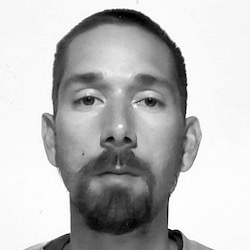Sebastiano Thei

Ph.D XXXVII
Supervisor: Vincenzo Dimonte
Phone: +39 0432 558401
Room: Rizzi NS2
Mail: thei.sebastiano@spes.uniud.it
Research Project
Set Theoretic Geologies and Class Forcing
The main objective of the research project is to broaden one of the most active areas of research in current Set Theory, namely Set-Theoretic Geology, which consists on the study of the multiverse of set-forcing extensions and grounds of a given (countable) set-theoretic universe. After Cohen’s solution of the Continuum Hypothesis, the forcing method became an important tool of Set Theory. While many independent results are proved by the forcing method, the nature of forcing is also a fundamental topic in this field.
On the other hand, the technique of forcing is customarily thought of as a method for constructing outer as opposed to inner models of set theory. A switch in perspective, however, allows us to view forcing as a method of describing inner models as well. The idea is simply to search inwardly for how the set-theoretic universe might itself have arisen by set-forcing. This change in viewpoint leads to the notion of grounds, that is, inner models of the universe of which the universe is a set-forcing extension. The study is now called set-theoretic geology, which attempts a study of the nature of the forcing method. Despite this method involves second-order objects (i.e. grounds and generic extensions), Laver [1] and independently Woodin [2] found that every model of set theory is definable in its set-forcing extension. Later, Fuchs, Hamkins and Reitz [3] refined Laver and Woodin’s result, and they give a uniform definition of all grounds, allowing us to treat grounds within the first order set theory. Using this uniform definition a study of the structure of all grounds was initiated and many concepts, which are arrived at by the idea of “undoing forcing”, were introduced.
In standard set-theoretic geology, we are exclusively concerned with set-generic forcing extensions. We may examine, however, how this can be extended to arbitrary extensions and we may ask whether there are other uniformly definable inner models. We aim to address this issue in the research project by focusing mainly on pseudo-grounds, namely inner models with the covering and approximation properties of grounds, but that are not grounds. The key point about this generalized context is that we still have first-order definable access to the family of pseudo-grounds. Thus, because the uniform definability theorem applies in this more general case, we may formalize the pseudo-ground analogues of the Ground Axiom (GA), the bedrock, the Bedrock Axiom and the mantle. In light of this, we may show that the mantle and the pseudo-mantle (the intersection of all pseudo grounds) can differ and, applying Reitz’s method [6], a proof of the consistency of GA together with the negation of the pseudo-GA can be easily performed. On the contrary, the pseudo-GA is more difficult to treat. While the pseudo-GA holds in the constructible universe, building a (class) forcing extension of the pseudo-GA is a relevant objective and it requires new ideas and sophisticated techniques since many forcing notions invoked in set-theoretic geology have a closure point at some regular cardinal [5]. Along this line and besides the natural definition of the pseudo-mantle, there are many open questions about it. An important one is whether we may control the pseudo-mantle of the target model. In particular, our aim is to know if any model of set theory can be the pseudo-mantle of another model. Anyway, our most fundamental lack of knowledge about the pseudo-mantle is that we do not yet know whether or not it is necessarily a model of ZFC.
Once the tools of this new geology are in place we aim to explore some connection between pseudo-grounds and class forcing. In modern Set Theory, the class forcing method has become a common tool. However, a first problem in developing set-theoretic geology with class forcing concerns the definability of the ground model. Indeed, there are class forcing notions such that the definability of the starting model fails in the generic extension [4]. Thus, another objective that the research project aims to achieve is to provide sufficient conditions on class forcing notions in order to establish a class version of the ground-model definability theorem.
Finally, it is possible that the universe is a generic extension of some choiceless model. What is more, in current Set Theory, the forcing method over choiceless models has become a relevant tool. So it is natural to consider set-theoretic geology without the Axiom of Choice (AC). However, the proof of the uniform definability of grounds heavily reply on AC, and it is still open if all grounds are uniformly definable without AC.
References
[1] R. Laver, Certain very large cardinals are not created in small forcing extensions. Ann. Pure Appl. Logic 149 (2007), no. 1-3, 1–6.
[2] W. H. Woodin, The continuum hypothesis, the generic-multiverse of sets, and the Ω conjecture. Set theory, arithmetic, and foundations of mathematics: theorems, philosophies, 13–42, Lect. Notes Log., 36, Assoc. Symbol. Logic, La Jolla, CA, 2011.
[3] G. Fuchs, J. D. Hamkins, J. Reitz, Set-theoretic geology. Ann. Pure Appl. Logic 166 (2015), no. 4, 464–501.
[4] Carolin Antos, Class Forcing in Class Theory. Kurt Gödel Research Center for Mathematical Logic,University of Vienna, July 1, 2018.
[5] J. D. Hamkins and Thomas A. Johnstone, Indestructible strong unfoldability. Notre Dame J. Form. Log., 51(3):291–321, 2010.
[6] Jonas Reitz, The Ground Axiom. PhD thesis, The Graduate Center of the City University of New York, September 2006.
[7] T. Usuba, The downward directed grounds hypothesis and very large cardinals. J. Math. Log. 17 (2017), no. 2, 1750009, 24 pp.